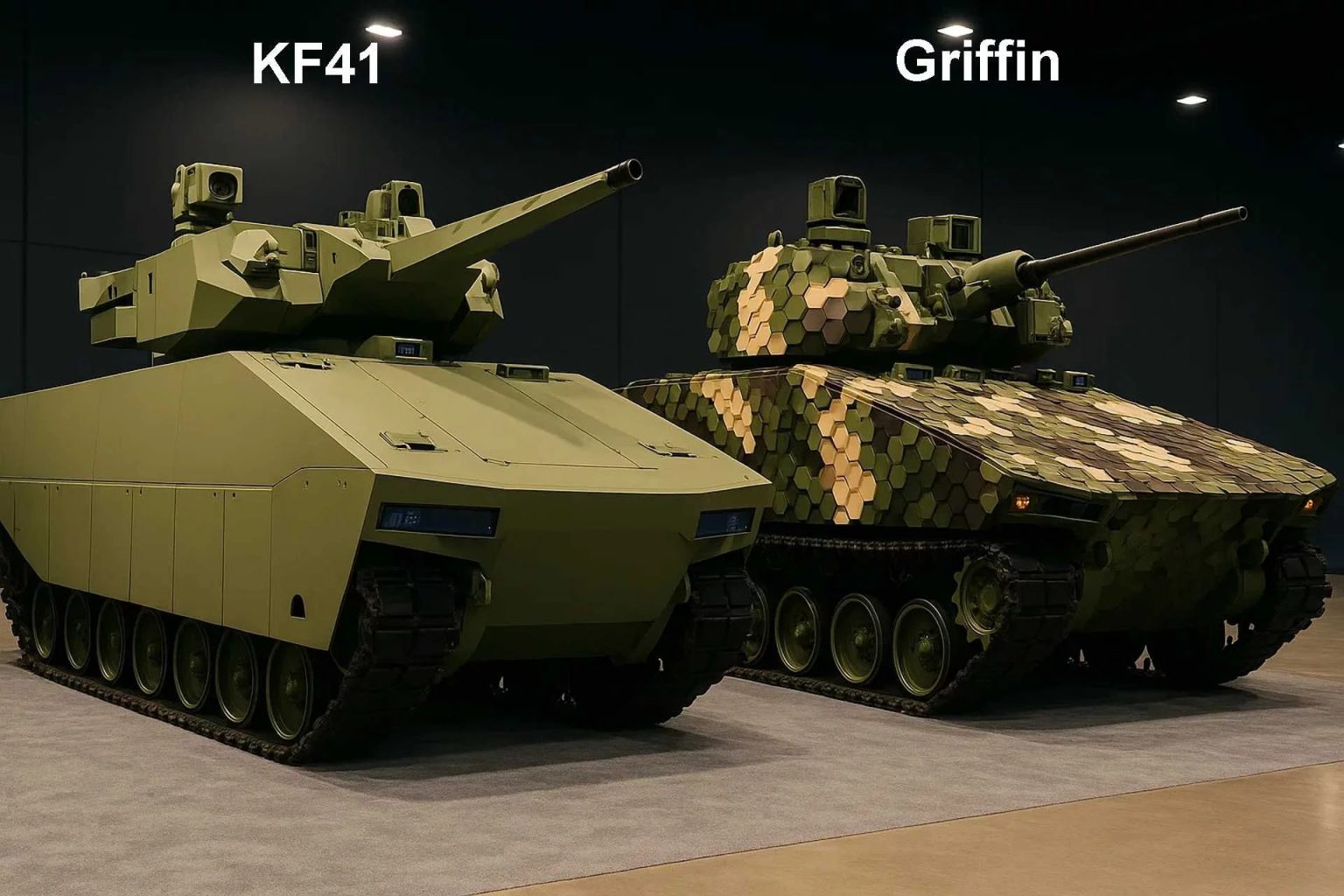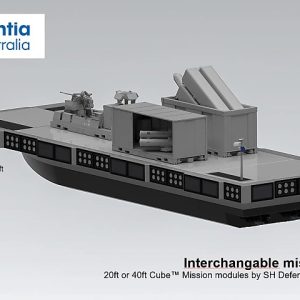The U.S. Army’s XM30 Infantry Fighting Vehicle (IFV) is emerging as the service’s defining ground combat platform for the digital age. Developed under the Optionally Manned Fighting Vehicle (OMFV) initiative, the XM30 represents a clean-sheet design that abandons the evolutionary path of the M2 Bradley in favour of a networked, hybrid-electric, and AI-enabled future battlefield capability.
Key Facts
- Program Origin: Optionally Manned Fighting Vehicle initiative (U.S. Army NGCV portfolio)
- Current Phase: Engineering & Manufacturing Development (Milestone B approved June 2025)
- Prototype Delivery: Early 2026 (General Dynamics Land Systems & American Rheinmetall Vehicles)
- Low-Rate Initial Production Decision: Expected late 2027
- Crew Capacity: Two crew + six to nine infantry soldiers
- Competitors: GDLS Griffin III and Rheinmetall Lynx KF41 platforms
From the Bradley to the Battlefield of the Future
For more than four decades, the M2 Bradley IFV has formed the backbone of U.S. mechanized infantry units. Yet, the platform’s aging architecture, limited digital capacity, and constrained internal volume have become critical shortcomings in the face of evolving threats such as loitering munitions, top-attack missiles, and drone swarms.
The XM30, designed within the Next Generation Combat Vehicle (NGCV) portfolio, addresses these gaps through modular architecture, advanced sensors, and hybrid-electric propulsion that promise quieter movement, increased range, and onboard energy generation for future-directed energy systems. The goal is simple but ambitious: to give Armored Brigade Combat Teams (ABCTs) a decisive technological edge.
Engineering for Overmatch
The XM30’s design philosophy revolves around three key pillars: mobility, lethality, and protection.
Mobility: The vehicle is required to outperform the Bradley M2A4 in tactical and operational manoeuvrability. Two XM30s must fit within a single C-17 Globemaster III transport aircraft, enabling rapid global deployment. Hybrid-electric propulsion provides silent watch capabilities, rapid acceleration, and robust power generation for sensors and communication networks.
Armament: A remote-operated turret will house a 30mm autocannon, with growth potential for the XM913 50mm chain gun, paired with coaxial armament and anti-tank guided missile launchers. An AI-assisted fire control system, integrated sensors, and multi-spectral targeting suite ensure precision engagement against vehicles, infantry, and UAVs alike.
Protection: Survivability defines the XM30’s design. It incorporates modular armour kits, underbody blast defences, and Active Protection Systems (APS) to intercept RPGs and anti-tank missiles. Moreover, it offers full CBRN (chemical, biological, radiological, and nuclear) protection and autonomous counter-UAV capabilities.
Competing for the Future Force
The American Rheinmetall Vehicles (ARV) team—partnered with Raytheon and Textron Systems—is adapting its proven Lynx KF41 platform to meet U.S. requirements. Its competitor, General Dynamics Land Systems (GDLS), has submitted a design derived from the Griffin III, leveraging experience from the Mobile Protected Firepower (MPF) program.
Each team received part of a $1.6 billion development contract in 2023, and both are currently building prototypes for delivery in 2026. Field evaluations will determine the final selection, paving the way for low-rate production by 2027 and full-rate fielding by the early 2030s.
A Strategic Transformation
The XM30 is not just a vehicle replacement—it is a doctrinal shift toward multi-domain operations (MDO). Army planners envision it as a digitally integrated node capable of sharing real-time data across joint and allied networks, coordinating with unmanned systems, and supporting autonomous operations when required.
As geopolitical pressures rise across the Indo-Pacific and European theatres, the XM30 represents a modernization cornerstone for the U.S. Army’s deterrence posture. Its open digital backbone ensures upgradeability beyond 2040, allowing continuous evolution alongside emerging technologies.
Implications and Outlook
Testing and evaluation of the XM30 prototypes will mark a defining moment in U.S. armoured warfare evolution. If successful, the program could influence not only the Army’s ground doctrine but also allied procurement across NATO, driving convergence toward hybrid propulsion, AI-assisted targeting, and networked survivability.
The XM30 underscores a broader truth of modern combat: the future battlefield rewards agility, autonomy, and adaptability. The U.S. Army’s mechanized infantry is preparing not just to survive—but to dominate—the wars of the 21st century.
Further Reading
- U.S. Army Next Generation Combat Vehicle (NGCV) Program Overview
- General Dynamics Land Systems Griffin III Overview
- Rheinmetall Lynx KF41 Platform
- Defence Agenda: U.S. Army Modernization Programs 2025
- Defence Agenda: NATO Armoured Vehicle Trends










